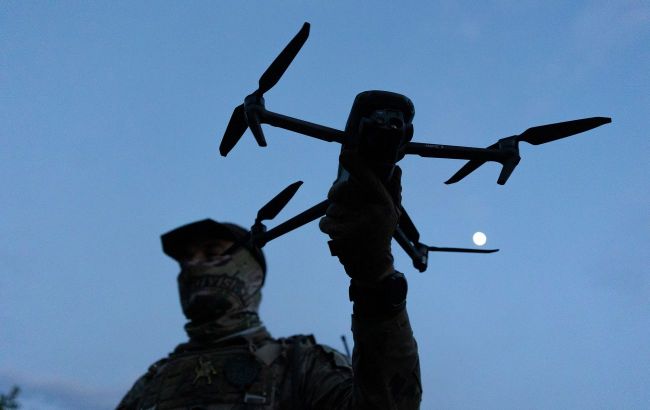Drones expand kill zone on Russia-Ukraine front – The Economist
 Photo: Drones have increased the kill zone on the front lines (Getty Images)
Photo: Drones have increased the kill zone on the front lines (Getty Images)
The Russian-Ukrainian war is entering a new phase with the introduction of long- and medium-range drones. Unmanned aerial vehicles are becoming a key weapon on the front lines, according to The Economist.
Artillery goes underground
Ukrainian troops in the Zaporizhzhia direction are adapting to the new threat from Russian drones. Artillerymen from the 128th Brigade now direct fire from shelters located up to 8 km from the front line.
A commander with the call sign Cartel reported that the Russians have significantly increased their use of drones. "We are going underground," he said. Their bunker is expected to be ready by mid-August.
Drones expand death zone
The front line is changing: the drone strike zone now covers up to 15 km on each side of the contact line. This complicates movement and operations.
It is expected that in the coming year, medium-range drones will create a second level of threat, covering up to 60 km deep. This puts logistics, artillery, and troop concentrations at risk.
The battles continue, but no major offensive is in sight
Fierce fighting continues in eastern Ukraine and the Sumy region. However, there are no signs of a major Russian offensive yet.
Compared to the early stages of the war, Ukrainian fighters no longer complain about a shortage of ammunition. However, the threat remains.

Russians losing motivation
According to the Ukrainian military, Russian troops are using poorly trained fighters for suicide attacks. They are followed by more trained groups if the first wave is successful.
Commander Vladyslav Pinchuk of the 241st Brigade notes a growing reluctance to follow orders. He says they lack manpower and motivation.
Battle of drones: Ukraine deploys Shershen drones
Medium-range Shershen drones are being tested in a field near Zaporizhzhia. They carry 8 kg of explosives and cost around €7,000.
Soldier says they are used against important targets, including artillery and logistics. These drones are launched from deep within Ukrainian territory, avoid obstacles, and are capable of hitting targets at a distance of 60 km or more.
Russia responds with Molniya, but lags in quality
Russia has an analogue - the Molniya drone. It is cheaper but less accurate. Both sides are actively developing AI guidance for medium-range drones.
It is expected that in the coming year, this could once again change the nature of combat operations on the front lines.
Former Commander-in-Chief of the Armed Forces of Ukraine Valerii Zaluzhnyi stated that since 2024, the full-scale war has entered a completely new phase - attrition.
Kyiv is preparing for the war to continue in 2026 and is preparing next year's budget with large-scale combat operations in mind.

